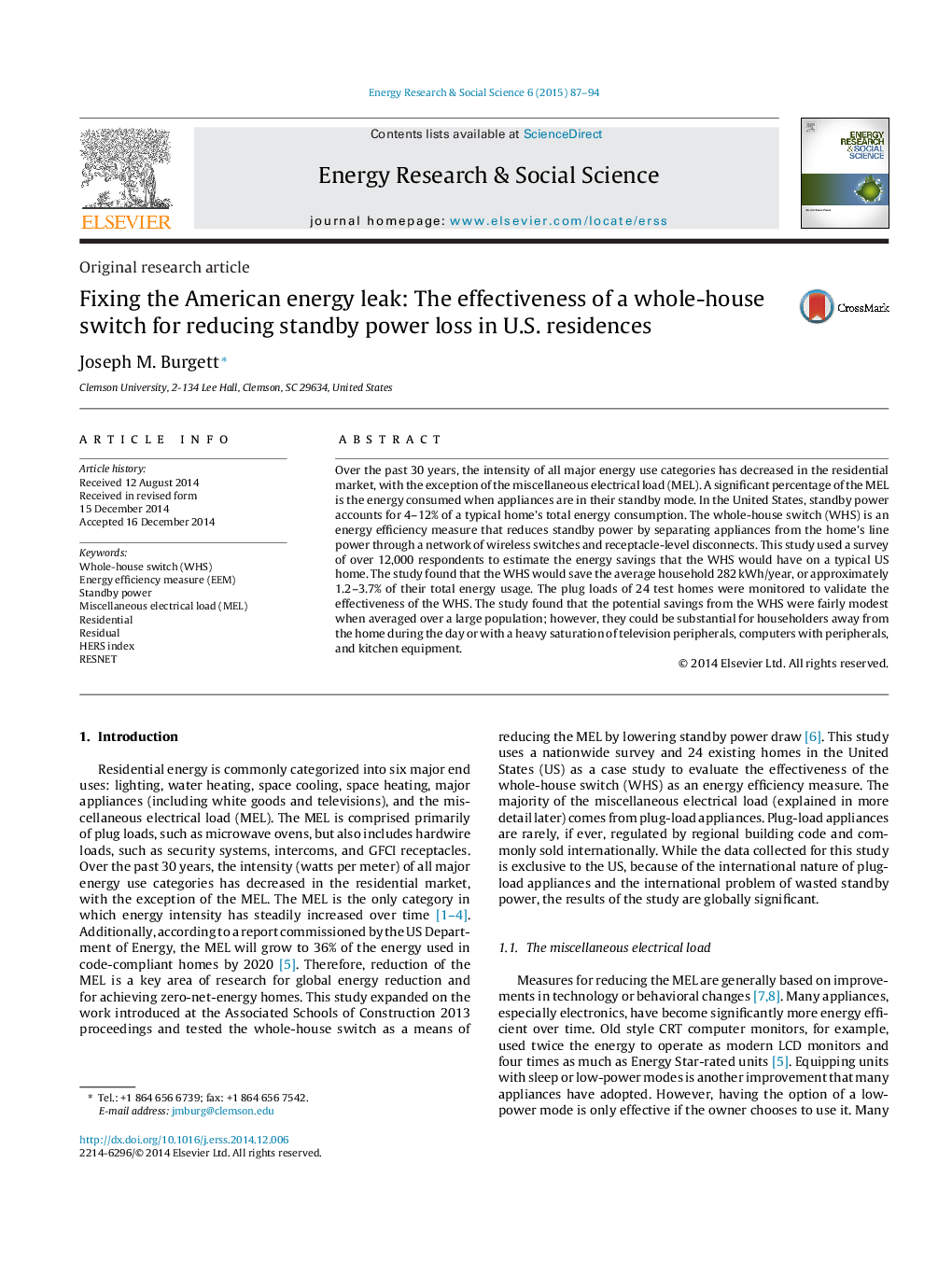| Article ID | Journal | Published Year | Pages | File Type |
|---|---|---|---|---|
| 6558893 | Energy Research & Social Science | 2015 | 8 Pages |
Abstract
Over the past 30 years, the intensity of all major energy use categories has decreased in the residential market, with the exception of the miscellaneous electrical load (MEL). A significant percentage of the MEL is the energy consumed when appliances are in their standby mode. In the United States, standby power accounts for 4-12% of a typical home's total energy consumption. The whole-house switch (WHS) is an energy efficiency measure that reduces standby power by separating appliances from the home's line power through a network of wireless switches and receptacle-level disconnects. This study used a survey of over 12,000 respondents to estimate the energy savings that the WHS would have on a typical US home. The study found that the WHS would save the average household 282Â kWh/year, or approximately 1.2-3.7% of their total energy usage. The plug loads of 24 test homes were monitored to validate the effectiveness of the WHS. The study found that the potential savings from the WHS were fairly modest when averaged over a large population; however, they could be substantial for householders away from the home during the day or with a heavy saturation of television peripherals, computers with peripherals, and kitchen equipment.
Keywords
Related Topics
Physical Sciences and Engineering
Energy
Energy (General)
Authors
Joseph M. Burgett,
